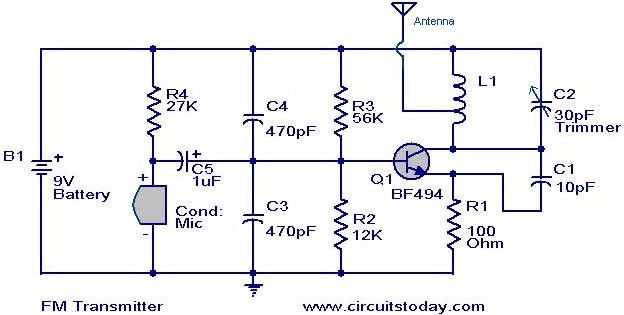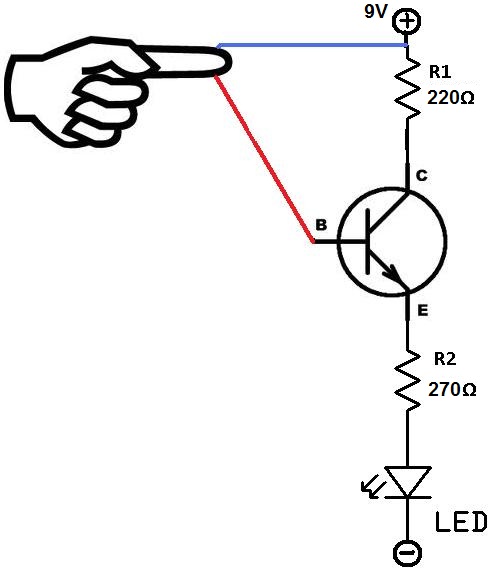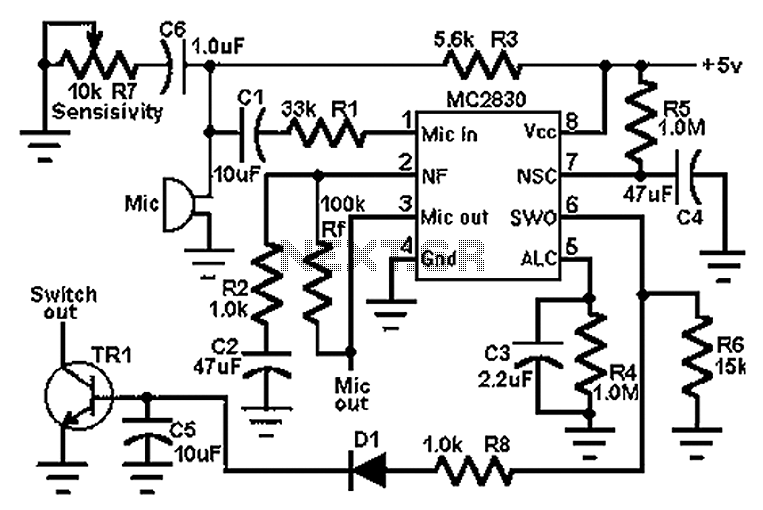
Using 555 IC lighting lights one delay circuit

The circuit utilizes a 555 timer IC to create a lighting group delay effect, as illustrated in Figure 2-46. It consists of the 555 IC along with a resistor and capacitor configuration that establishes the delay. The circuit remains powered even without a light transformer (T), allowing it to maintain energy. The delay time is determined by the resistor (Ri) and capacitor (C2).
The 555 timer IC operates in monostable mode in this configuration, where it generates a single output pulse in response to a trigger signal. When the circuit is activated, the capacitor (C2) begins to charge through the resistor (Ri). The time it takes for the capacitor to charge to approximately 2/3 of the supply voltage determines the delay period before the output transitions from low to high. The delay time (T) can be calculated using the formula T = 1.1 × Ri × C2, where T is in seconds, Ri is in ohms, and C2 is in farads.
In this design, the absence of a light transformer means that the circuit can function independently of external lighting systems, making it versatile for various applications. The output from the 555 timer can be used to control other devices, such as relays or transistors, enabling the delayed activation of lights or other electronic components. The selection of Ri and C2 values allows for customization of the delay time to suit specific requirements, providing flexibility in timing applications.
This circuit is particularly useful in scenarios where a delay in lighting is desired, such as in automotive lighting systems, stage lighting, or safety applications where a gradual illumination is preferable. Proper attention should be given to the ratings of the components used, especially the capacitor and resistor, to ensure reliable operation over time.Using 555 lights lighting group delay IC circuit of the circuit shown in Figure 2-46. By the 555 IC and resistor-capacitor circuit composed of the delay. The circuit without light transformer T is still energized, energy. Delay time is determined by Ri, C2.
The 555 timer IC operates in monostable mode in this configuration, where it generates a single output pulse in response to a trigger signal. When the circuit is activated, the capacitor (C2) begins to charge through the resistor (Ri). The time it takes for the capacitor to charge to approximately 2/3 of the supply voltage determines the delay period before the output transitions from low to high. The delay time (T) can be calculated using the formula T = 1.1 × Ri × C2, where T is in seconds, Ri is in ohms, and C2 is in farads.
In this design, the absence of a light transformer means that the circuit can function independently of external lighting systems, making it versatile for various applications. The output from the 555 timer can be used to control other devices, such as relays or transistors, enabling the delayed activation of lights or other electronic components. The selection of Ri and C2 values allows for customization of the delay time to suit specific requirements, providing flexibility in timing applications.
This circuit is particularly useful in scenarios where a delay in lighting is desired, such as in automotive lighting systems, stage lighting, or safety applications where a gradual illumination is preferable. Proper attention should be given to the ratings of the components used, especially the capacitor and resistor, to ensure reliable operation over time.Using 555 lights lighting group delay IC circuit of the circuit shown in Figure 2-46. By the 555 IC and resistor-capacitor circuit composed of the delay. The circuit without light transformer T is still energized, energy. Delay time is determined by Ri, C2.





